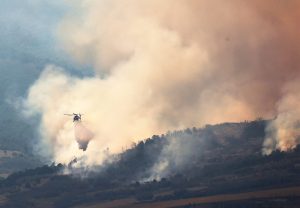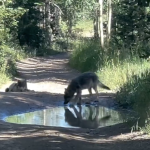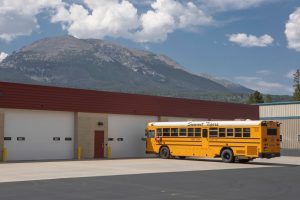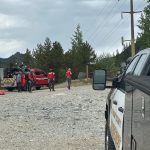Drought worsens in Colorado as hot, dry, windy weather fuels wildfire behavior — and risk — on Western Slope
Colorado state climatologist says the weather has been hot and the monsoon season weak, with little signs of relief anytime soon
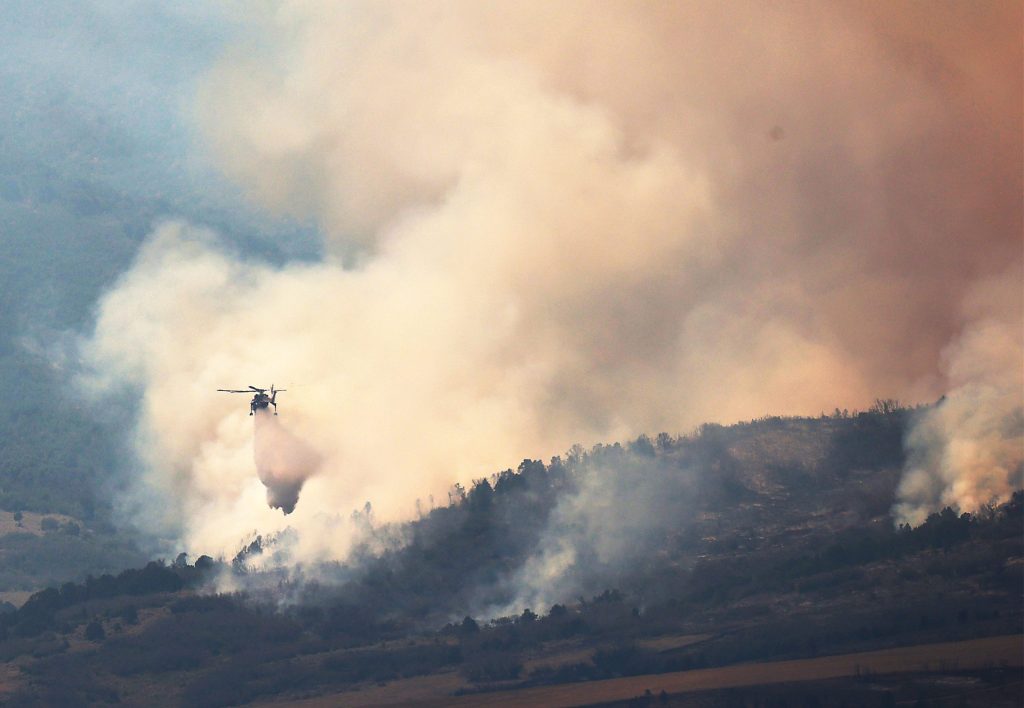
John F. Russell/Steamboat Pilot & Today
Drought conditions are getting worse on Colorado’s Western Slope, increasing the risk of wildfires, even as several large fires are already burning, scorching thousands of acres and forcing evacuations.
Colorado State Climatologist Russ Schumacher said the extended dry period on the Western Slope contains “echoes” of the climate patterns in 2020, the worst wildfire season in Colorado history, when the three largest wildfires recorded in the state occurred.
“What characterized that year was the summer was really, extremely hot and the monsoon was basically nonexistent,” Schumacher said, noting that the Cameron Peak Fire — the largest in the state’s history — sparked in August 2020.
Like 2020, this summer has been hot, with above-average temperatures across much of the Western Slope, Schumacher said. The monsoon season has also been lackluster, with little precipitation and hot, dry weather coming on the heels of a winter with a poor snowpack.
This June and July were among the 10 hottest on record in the northwestern corner of the state, where some of the largest wildfires are now raging, according to the Colorado Climate Center at Colorado State University. While the southern mountains got above-average precipitation in June, things remained dry in the northwest, where precipitation was less than 50% of average. In July, precipitation was below-average across the entire Western Slope.
Extreme drought is now impacting all of Moffat, Rio Blanco, Garfield, Pitkin, Teller and Delta counties and part of Eagle County, according to the U.S. Drought Monitor. Severe drought has spread east into Summit, Routt and Lake counties and across the southwestern part of the state.
“It’s a time of year when really it should be more humid and you should be getting clouds and rainfall on the Western Slope. But it’s just not happening this year,” Schumacher said. When the monsoon has produced storms this summer, there has usually been more lightning and wind than rain, he said. “The dry thunderstorms with gusty winds, those are not the kinds of thunderstorms you want this time of year. You want soakers, and there have not been many of those.”
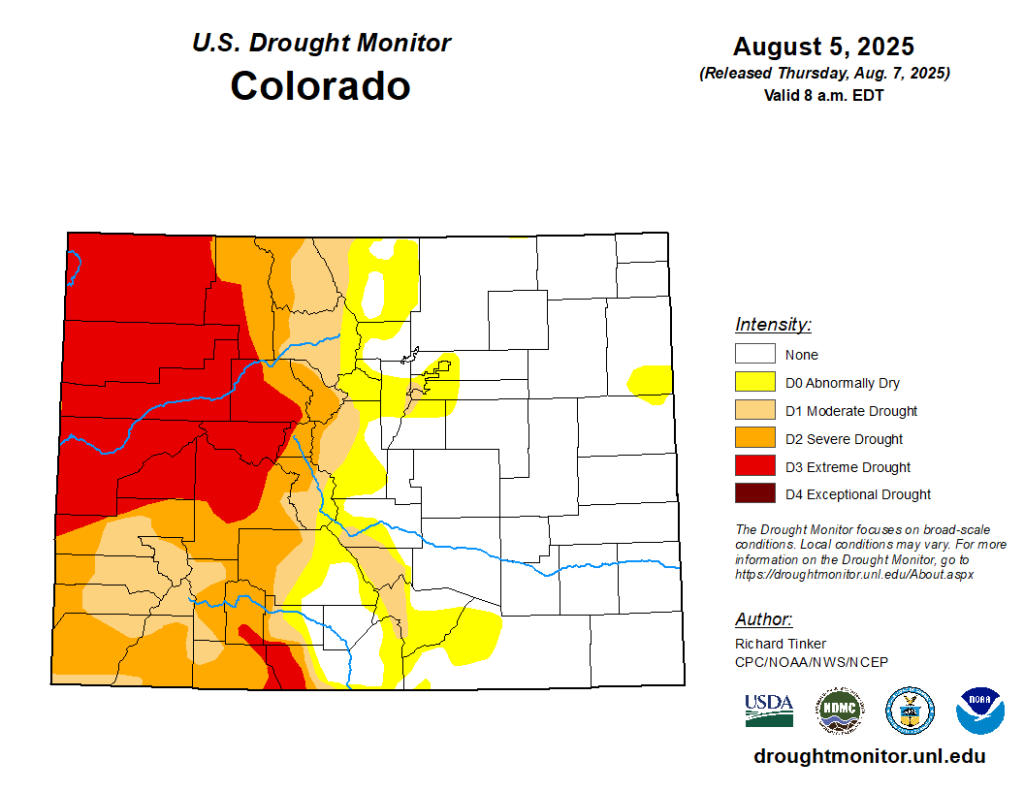
Lightning has sparked several wildfires in Colorado, including wildfires burning in the northwest near Meeker, in the southwest near Gateway and in the Black Canyon of the Gunnison National Park, according to InciWeb.Wildfire.gov.
Over the past week, high winds and low relative humidity that dries out vegetation have been stacked on top of the heat, leading to red flag warnings across the Western Slope and fueling extreme fire behavior. After lightning sparked the Lee Fire in Rio Blanco County on Aug. 2, it exploded to more than 58,700 acres — making it the eighth largest wildfire in the state’s history — in just six days as high winds allowed the fire to surge through dry vegetation.

“When you have a fire burning, the three things you don’t want are hot, dry and windy,” Schumacher said. “When the winds are really strong, like they have been the last few days, and the humidity is low, it allows the fires to run really quickly. You get flames that are jumping in the canopy or running through the grasslands and shrublands really quickly. It makes it extremely difficult for firefighters.”
The hot, dry conditions experienced on the Western Slope this summer are being made more likely by global warming, Schumacher said. There is a consensus among scientists that climate change has been caused primarily by burning fossil fuels that release heat-trapping gasses like carbon dioxide into the atmosphere.
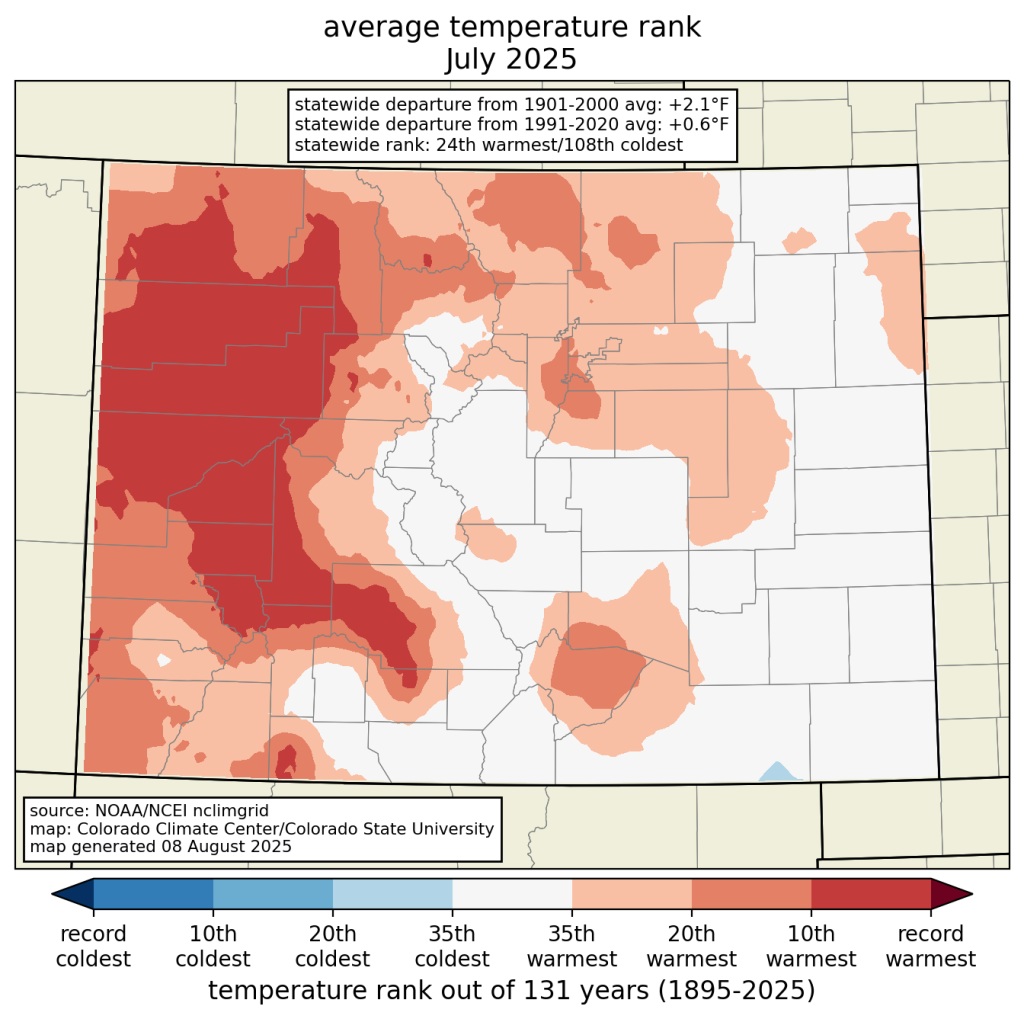
Average temperatures in Colorado have warmed by 2.3 degrees Fahrenheit from 1980 to 2022, according to a report the Colorado Water Conservation Board published last year. In Northwest Colorado, summer precipitation has decreased 20% compared to the period between 1951 and 2000.
“We’ve seen warming in Colorado across all seasons,” Schumacher said. “But where it has been especially acute the last few decades has been in the summers. The summer is usually the hottest, but that’s also where we’re seeing the largest warming trends.”
The hotter weather only exacerbates drought conditions as more heat makes the atmosphere “thirstier,” causing it to leech more water out of the ground and vegetation, Schumacher said. For Colorado, he said the result of the warming trend is more hot days that increase wildfire risk and a wildfire season that starts earlier in the spring and extends later into the fall, he said.
In 2020, massive fires like the Cameron Peak Fire, which torched more than 200,000 acres, burned late into the fall as hot, dry conditions continued for months. While Schumacher said he is hopeful that the monsoon will return, so that won’t be the case this year, the current forecast doesn’t bode well, at least in the short-term.
“There’s no meaningful relief in the forecast for at least the next week to 10 days,” Schumacher said. “We’ll have to hold out hope that the latter part of the month will be a little bit better. There is some suggestion that maybe some monsoon returns. But forecasts that far out are pretty uncertain.”

Support Local Journalism

Support Local Journalism
As a Summit Daily News reader, you make our work possible.
Summit Daily is embarking on a multiyear project to digitize its archives going back to 1989 and make them available to the public in partnership with the Colorado Historic Newspapers Collection. The full project is expected to cost about $165,000. All donations made in 2023 will go directly toward this project.
Every contribution, no matter the size, will make a difference.

